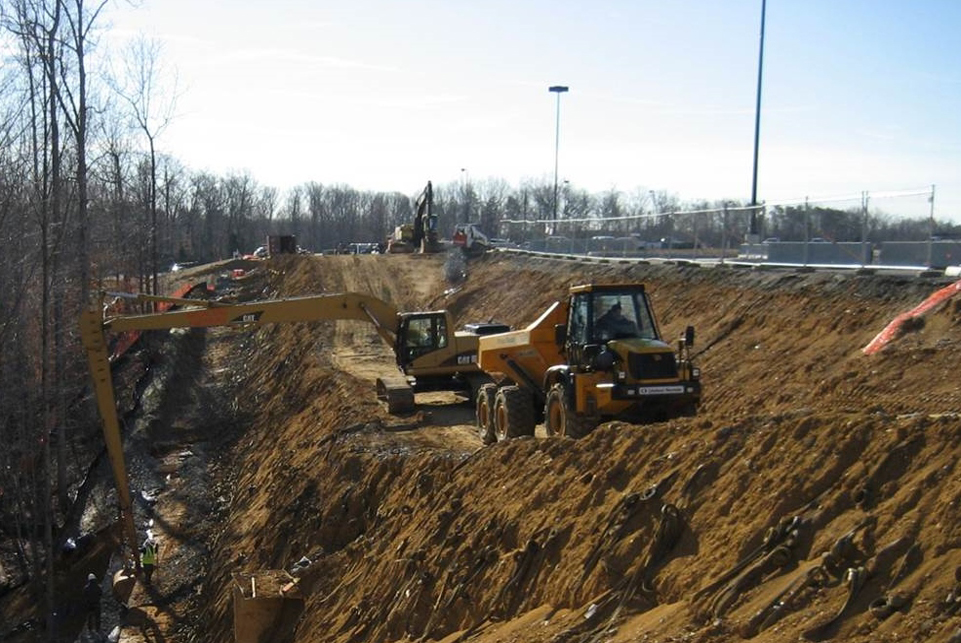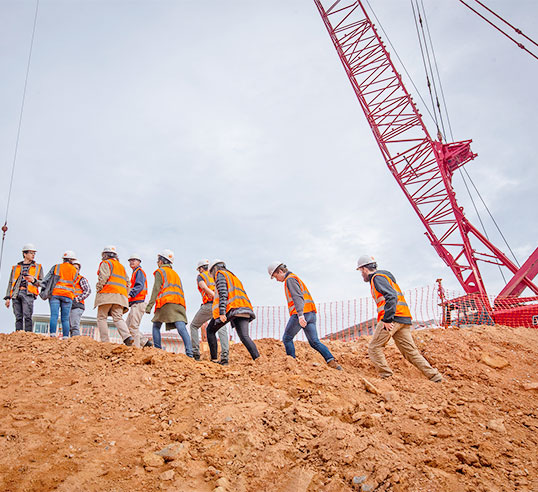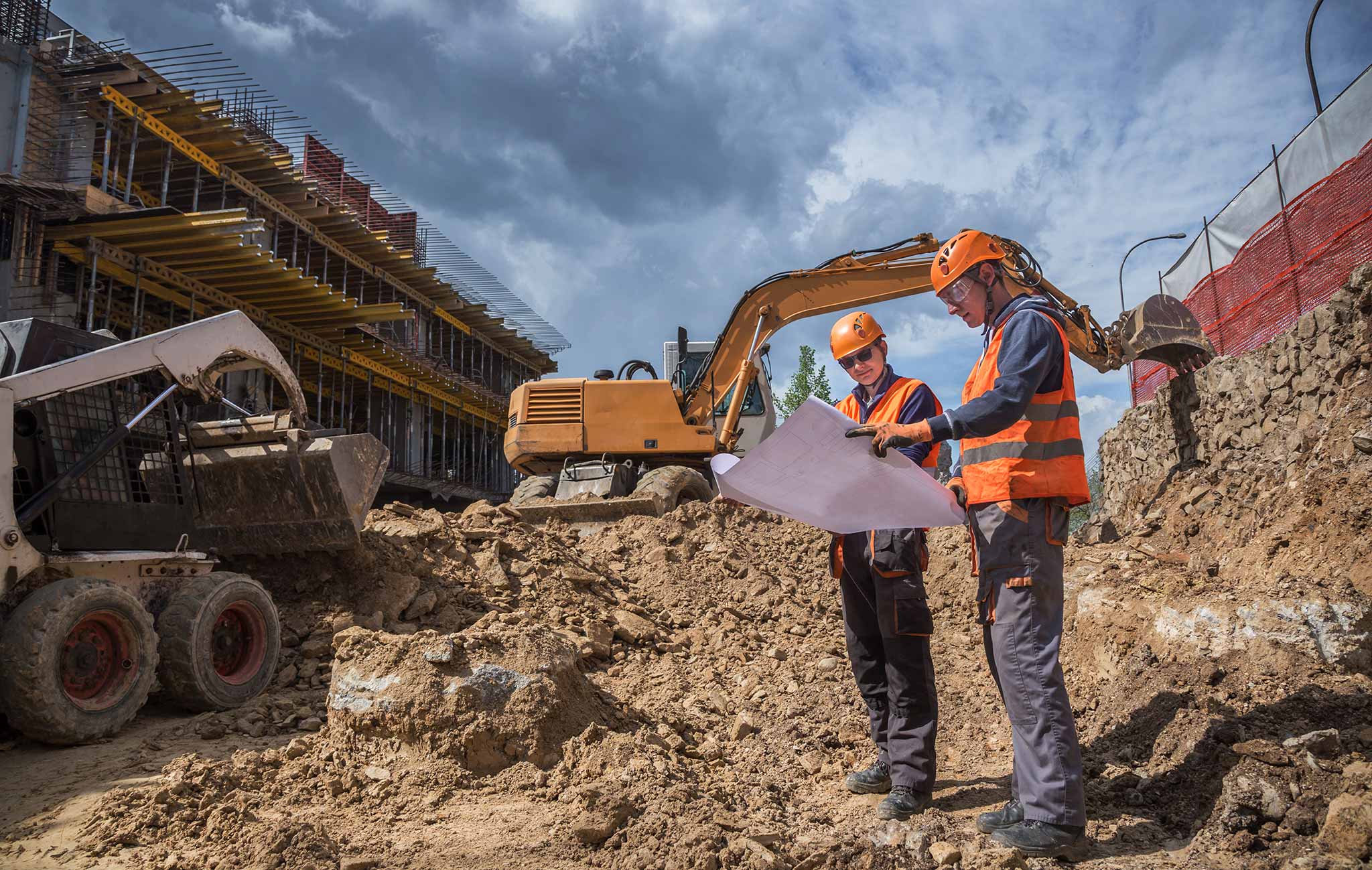The Development of Civil Consulting Engineers in the Modern Generation
Wiki Article
An In-depth Review of the Key Responsibilities of Geotechnical Engineers in Site Characterization and Ground Enhancement Strategies for Design Solutions
Geotechnical designers are indispensable to the effective implementation of design projects, tasked with the vital responsibilities of website characterization and the application of ground renovation methods. Their job entails a thorough evaluation of subsurface conditions, using different testing approaches to recognize soil and rock properties. This fundamental expertise not only notifies design decisions however additionally mitigates possible threats connected with ground instability. As we check out the complex roles of these professionals, it ends up being obvious just how their know-how forms the safety and security and performance of engineering services. What certain methods and evaluations stand apart in this crucial self-control?Function of Geotechnical Designers
Geotechnical engineers play a critical role in the layout and construction of framework by assessing the actions of soil and rock below the surface area - civil consulting engineers. Their duties encompass evaluating subsurface problems to inform layout choices that guarantee structural security and safety and security. By performing in-depth analyses of dirt residential properties, including shear strength, leaks in the structure, and compressibility, geotechnical engineers provide essential data that affects the selection of appropriate building and construction materials and methodsIn enhancement to evaluating soil technicians, geotechnical engineers are tasked with determining possible hazards such as landslides, sinkholes, and ground negotiations. Their expertise assists minimize risks connected with these geotechnical phenomena, consequently shielding both the atmosphere and public safety. They also work together carefully with other engineering self-controls, making certain that geotechnical factors to consider are integrated right into overall task design.
Furthermore, geotechnical designers take part in the evaluation of existing structures, providing suggestions for retrofitting and fixings when necessary. Their detailed understanding of soil-structure communication is vital for the growth of lasting infrastructure options. Generally, the duty of geotechnical designers is essential to the effective awareness of building and construction tasks, ensuring they are risk-free, long lasting, and certified with regulative standards.

Website Characterization Processes
Reliable website characterization procedures are important for comprehending the subsurface problems that affect job design and implementation. Geotechnical engineers employ an organized approach to collect, assess, and interpret information concerning groundwater, soil, and rock characteristics. This process starts with an extensive testimonial of existing literature and archaeological site information, giving insights into previous site problems and potential challenges.
Information analysis adheres to fieldwork, where engineers use geostatistical approaches to translate searchings for and create geological models. Through diligent site characterization, geotechnical designers lay the foundation for effective task execution, decreasing unexpected difficulties and maximizing resource appropriation.
Soil and Rock Testing Techniques
While comprehending subsurface problems is important, the selection of suitable dirt and rock screening methods is similarly necessary for exact evaluation and style. Geotechnical engineers use a selection of screening methods to evaluate the physical and mechanical residential properties of soil and rock materials.Research laboratory examinations, such as Atterberg restrictions, grain dimension analysis, and unconfined compressive stamina examinations, supply crucial information on soil habits under different moisture conditions and packing circumstances. These examinations assist figure out dirt classification and predict negotiation or shear toughness features crucial for foundation design.
In-situ testing approaches, consisting of Standard Infiltration Examinations (SPT), Cone Penetration Tests (CPT), and pressure meter tests, permit designers to gather data directly from the ground. These methods supply beneficial understandings right into the dirt's density, consistency, and stratification without the demand for comprehensive sampling.
Rock screening normally entails core tasting and lab analysis to assess properties like uniaxial compressive toughness and rock high quality designation (RQD) With each other, these dirt and rock testing methods make it possible for geotechnical engineers to make enlightened choices relating to site-specific challenges, making certain the security and security of engineering options.
Ground Improvement Strategies
Ground enhancement techniques are essential for boosting the engineering residential or commercial properties of soil, consequently enhancing its load-bearing ability and lowering negotiation. These visit this site right here methods are vital in dealing with obstacles provided by weak or bothersome soils, which can substantially impact the security and toughness of frameworks.Numerous ground renovation strategies are employed, including compaction, grouting, and soil stabilization. Grouting, on the various other hand, involves injecting a fluid material into the ground to load gaps and enhance dirt cohesion.
Soil stabilization incorporates a variety of methods, from chemical additives to mechanical therapies, focused on boosting the dirt's resistance to disintegration and deformation. Techniques such as lime stabilization or cement mixing change the residential or commercial properties of the soil at a bit level, improving its total efficiency.
Relevance of Geotechnical Analyses
Geotechnical assessments play an important role in the planning and you could check here design of design jobs, as they offer important information about the subsurface problems. Comprehending soil homes, rock formations, groundwater degrees, and prospective geohazards is important for guaranteeing the security and security of structures. These evaluations allow designers to make educated decisions regarding site selection, layout specifications, and building and construction techniques.
The relevance of geotechnical evaluations extends past initial task stages; they contribute in danger management and expense efficiency. By determining potential concerns early, such as soil settlement, slope instability, or excessive groundwater, designers can devise proper reduction strategies, lowering the possibility of pricey delays and structural failings. Moreover, these assessments support conformity with regulatory needs and improve the sustainability of design practices.

Verdict
In conclusion, geotechnical designers are vital to making sure the safety and security of design projects with comprehensive website characterization and ground improvement methods. geotechnical industry. Their systematic technique to examining subsurface conditions, incorporated with their recommendations for effective ground adjustment, considerably boosts dirt residential or commercial properties and load-bearing ability. The competence of go to this website geotechnical designers not only helps with informed project preparation yet additionally makes sure conformity with policies and promotes reliable communication amongst stakeholders, ultimately adding to effective design resultsGeotechnical engineers play a critical function in the layout and construction of infrastructure by examining the actions of dirt and rock beneath the surface. By carrying out detailed analyses of soil residential properties, consisting of shear strength, permeability, and compressibility, geotechnical designers provide crucial data that affects the selection of suitable construction materials and techniques.
In enhancement to analyzing dirt technicians, geotechnical designers are charged with identifying prospective risks such as landslides, sinkholes, and ground settlements. Geotechnical designers use a methodical strategy to collect, examine, and translate data regarding soil, rock, and groundwater features. By determining prospective issues early, such as dirt negotiation, slope instability, or excessive groundwater, designers can create appropriate mitigation strategies, lowering the probability of expensive hold-ups and architectural failings.
Report this wiki page